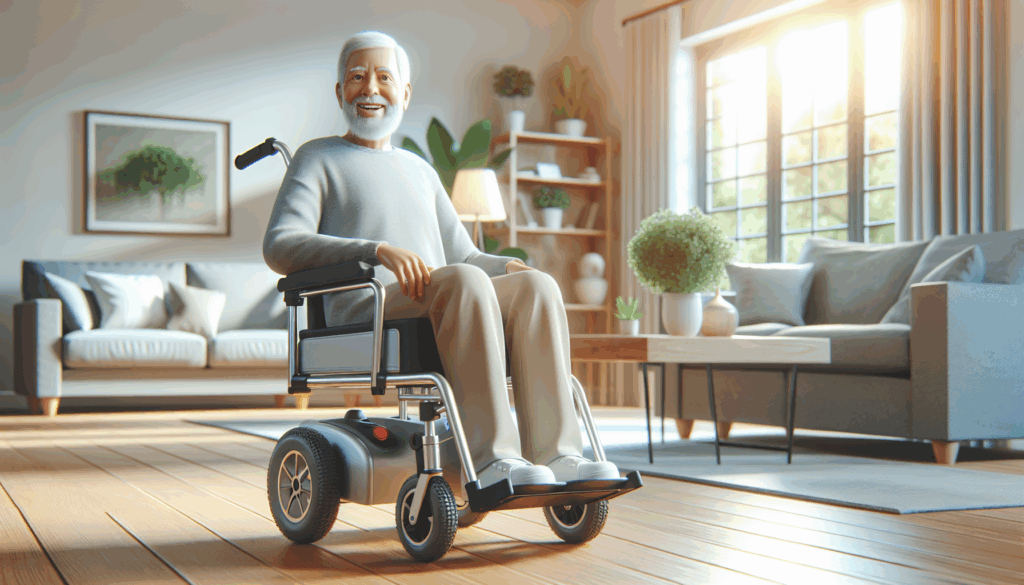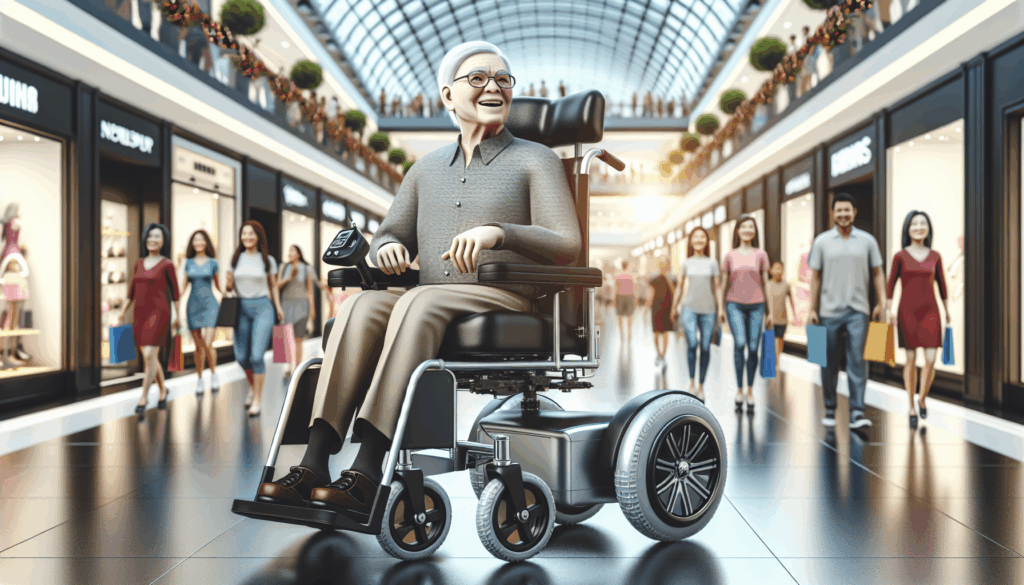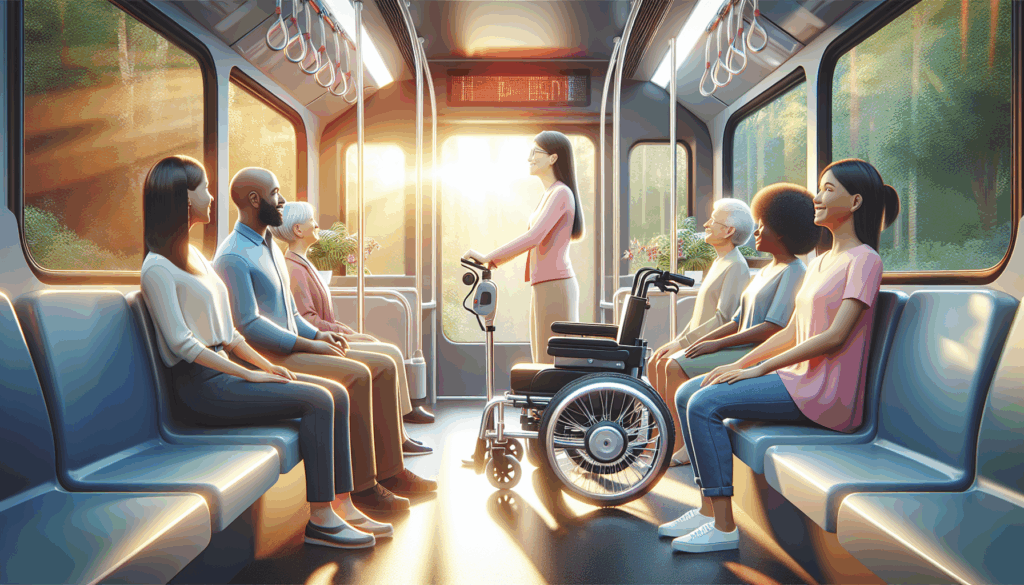People with disabilities in Malaysia face numerous daily challenges, with mobility being one of the most significant barriers to independence and social inclusion. Traditional wheelchairs have long served as a vital mobility tool, but they often require substantial physical effort and offer limited range. With advancements in assistive technology, the e-wheelchair has emerged as a transformative innovation that enhances mobility and quality of life.
An e-wheelchair, powered by an electric motor and rechargeable battery, allows users to move with minimal effort and greater control. This development is particularly important in Malaysia, where accessibility infrastructure is improving but still inconsistent. The e-wheelchair helps bridge the gap between accessibility limitations and real-life independence, enabling users to travel longer distances, handle slopes, and navigate various terrains confidently.

In this article, we explore the five key benefits of e-wheelchairs in Malaysia, including enhanced mobility, better accessibility, improved safety, eco-friendly advantages, and cost-effectiveness. Together, these benefits demonstrate how technology can empower people with disabilities and create a more inclusive and sustainable society.
Enhanced Mobility and Independence
The most profound benefit of the e-wheelchair is the freedom it provides. Unlike traditional manual wheelchairs that depend entirely on physical strength, e-wheelchairs are powered by electric motors, allowing users to move smoothly and effortlessly. This means individuals no longer need to rely on assistance for daily movement, whether indoors or outdoors.
With easy-to-use control systems such as joystick navigation or even touch-based controls users can manage speed and direction with precision. This increased control gives people the confidence to explore public areas, parks, and shopping malls independently. Furthermore, modern e-wheelchairs are designed for comfort, featuring adjustable seats, shock absorption, and long battery life that supports extended use without fatigue.

For many Malaysians with disabilities, this newfound independence means more than just mobility it represents dignity, empowerment, and social participation. Being able to move freely encourages users to take part in community events, access workplaces, and engage in social activities. Ultimately, e-wheelchairs promote physical and emotional well-being by helping users regain control over their mobility and their lives.
Improved Accessibility
Accessibility remains a major concern for people with disabilities in Malaysia. While public facilities and transportation systems have improved over the years, gaps still exist. Ramps may be too steep, elevators might be out of order, or pathways could be uneven. E-wheelchairs help overcome these challenges by providing users with greater adaptability across different environments.
Equipped with durable tires and motorized propulsion, e-wheelchairs can navigate slopes, curbs, and rough surfaces that are difficult for manual wheelchairs to manage. Some models are even designed with terrain-specific capabilities, enabling smoother rides across outdoor areas like parks or uneven pavements. This functionality extends the range of accessible locations for users, encouraging a more active lifestyle.

Moreover, many e-wheelchairs come with foldable or portable designs, allowing users to store or transport them easily in cars or public transport. This feature enhances convenience and flexibility, giving users more freedom to travel beyond their immediate surroundings. As Malaysia continues to develop inclusive infrastructure, e-wheelchairs stand as an essential solution bridging the gap between design intent and real-world accessibility.
Enhanced Safety and Stability
Safety is one of the top priorities when it comes to mobility aids. Traditional wheelchairs can sometimes tip over, especially on uneven surfaces or during sharp turns. Modern e-wheelchairs are specifically engineered to minimize these risks through improved stability and safety systems.
Many models feature anti-tip wheels, enhanced traction control, and weight-balanced frames that ensure greater stability on challenging terrain. Advanced braking systems provide smooth and reliable stops, even on inclines, while adjustable seating positions allow users to maintain proper posture and comfort throughout the day. These elements not only prevent accidents but also reduce muscle strain and fatigue.

Furthermore, smart safety features are being integrated into newer e-wheelchair designs, such as obstacle detection sensors, automatic braking, and customizable speed limits. These innovations make e-wheelchairs suitable for both indoor and outdoor use, providing peace of mind to users and their caregivers. In Malaysia’s growing urban landscape, where navigation can be complex, these advanced safety measures help users travel confidently and securely.
Eco-friendly Solution
As sustainability becomes an important national focus, e-wheelchairs contribute positively to Malaysia’s green movement. Unlike fuel-powered vehicles, e-wheelchairs run on rechargeable batteries that produce zero emissions, helping reduce carbon footprint. This makes them a clean and environmentally friendly alternative for personal mobility.
By choosing e-wheelchairs, Malaysians support eco-conscious living while gaining practical benefits. Modern batteries can be charged overnight using standard outlets and typically last for several hours of continuous use. This efficient design helps reduce dependence on fossil fuels while encouraging the adoption of renewable energy technologies.

In addition to environmental advantages, e-wheelchairs also align with Malaysia’s vision of sustainable urban development. By promoting cleaner and quieter modes of mobility, they enhance air quality, minimize noise pollution, and encourage communities to embrace greener lifestyles. The use of e-wheelchairs not only benefits individuals with disabilities but also contributes to a broader movement toward environmental responsibility.
Cost-Effective Solution
While the initial purchase cost of an e-wheelchair may appear high, it provides significant long-term savings and value. The design of modern e-wheelchairs emphasizes durability, energy efficiency, and minimal maintenance. Unlike traditional wheelchairs that may require frequent replacements of parts due to manual wear and tear, e-wheelchairs are built to last with high-quality components.
Operating costs are also low, as charging the battery consumes very little electricity compared to the ongoing expense of fuel or public transportation. In many cases, users can travel independently without the need for external assistance or specialized vehicles, saving both time and money. Additionally, some insurance or government programs in Malaysia may offer partial financial support or incentives for mobility aid purchases, making them even more affordable.

Over time, an e-wheelchair proves to be a cost-effective investment that enhances mobility, independence, and quality of life. The combination of comfort, low upkeep, and reliability makes it a practical choice for many Malaysians seeking both financial and lifestyle benefits.
Conclusion: Empowerment Through Innovation
E-wheelchairs are more than just a mobility aid they are a symbol of empowerment, freedom, and technological progress. By improving accessibility, safety, and sustainability, these devices allow Malaysians with disabilities to lead more independent and fulfilling lives.
As Malaysia moves toward a more inclusive and eco-friendly society, the adoption of e-wheelchairs reflects the nation’s commitment to equality and innovation. Whether for commuting, socializing, or daily errands, e-wheelchairs are transforming the way people experience movement. With continued support and awareness, we can ensure that everyone, regardless of ability, has the opportunity to live confidently and independently.
